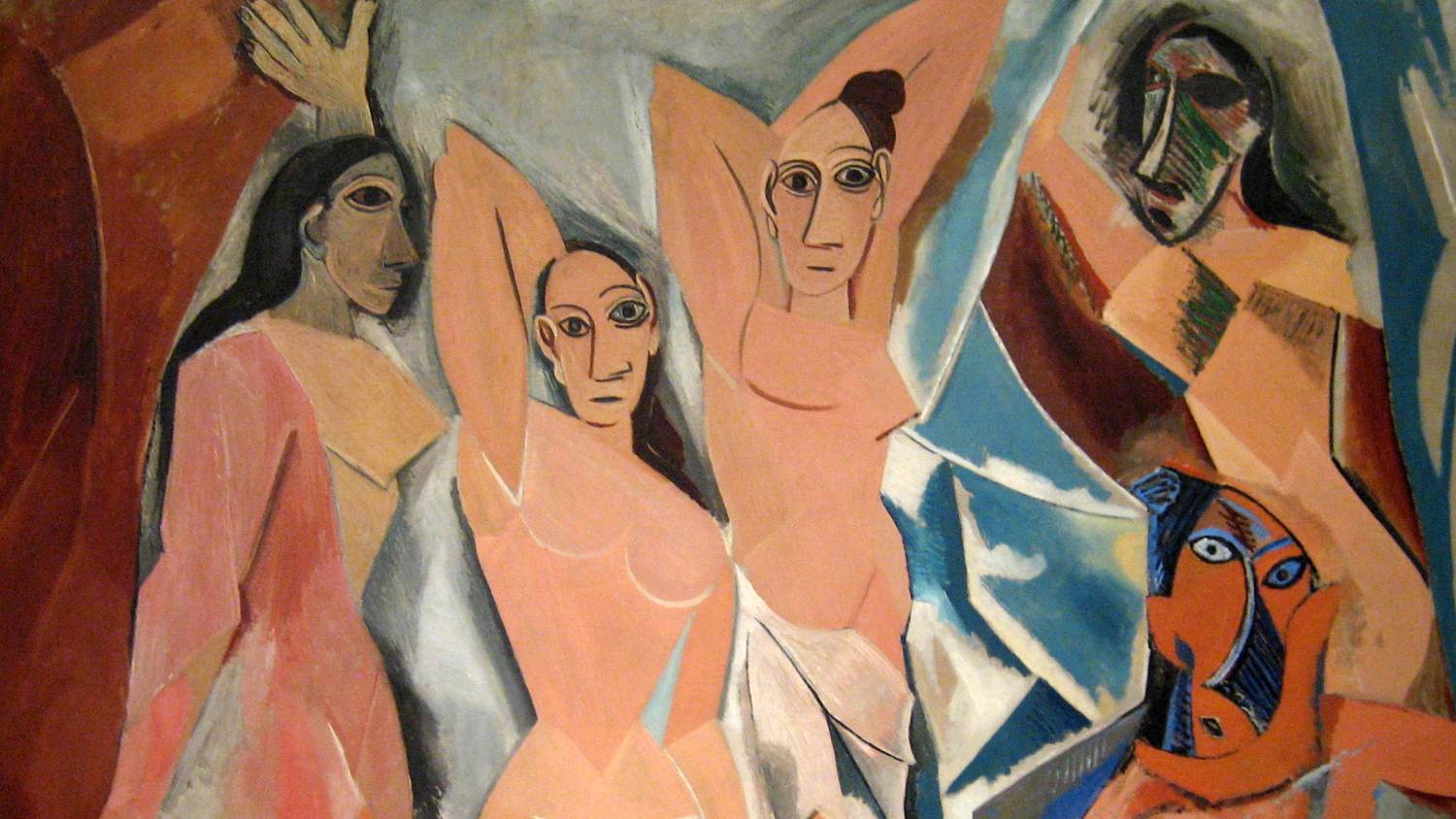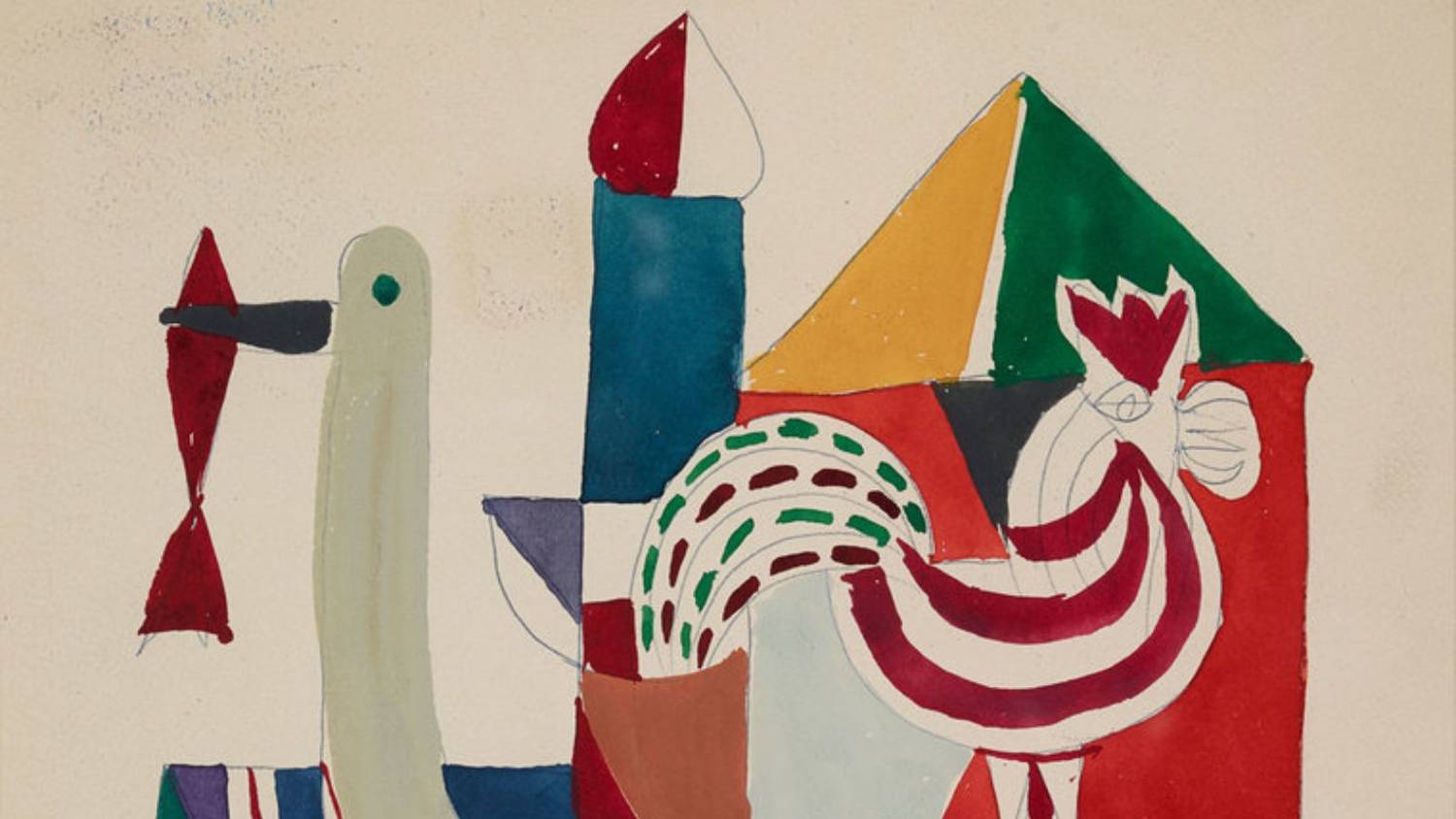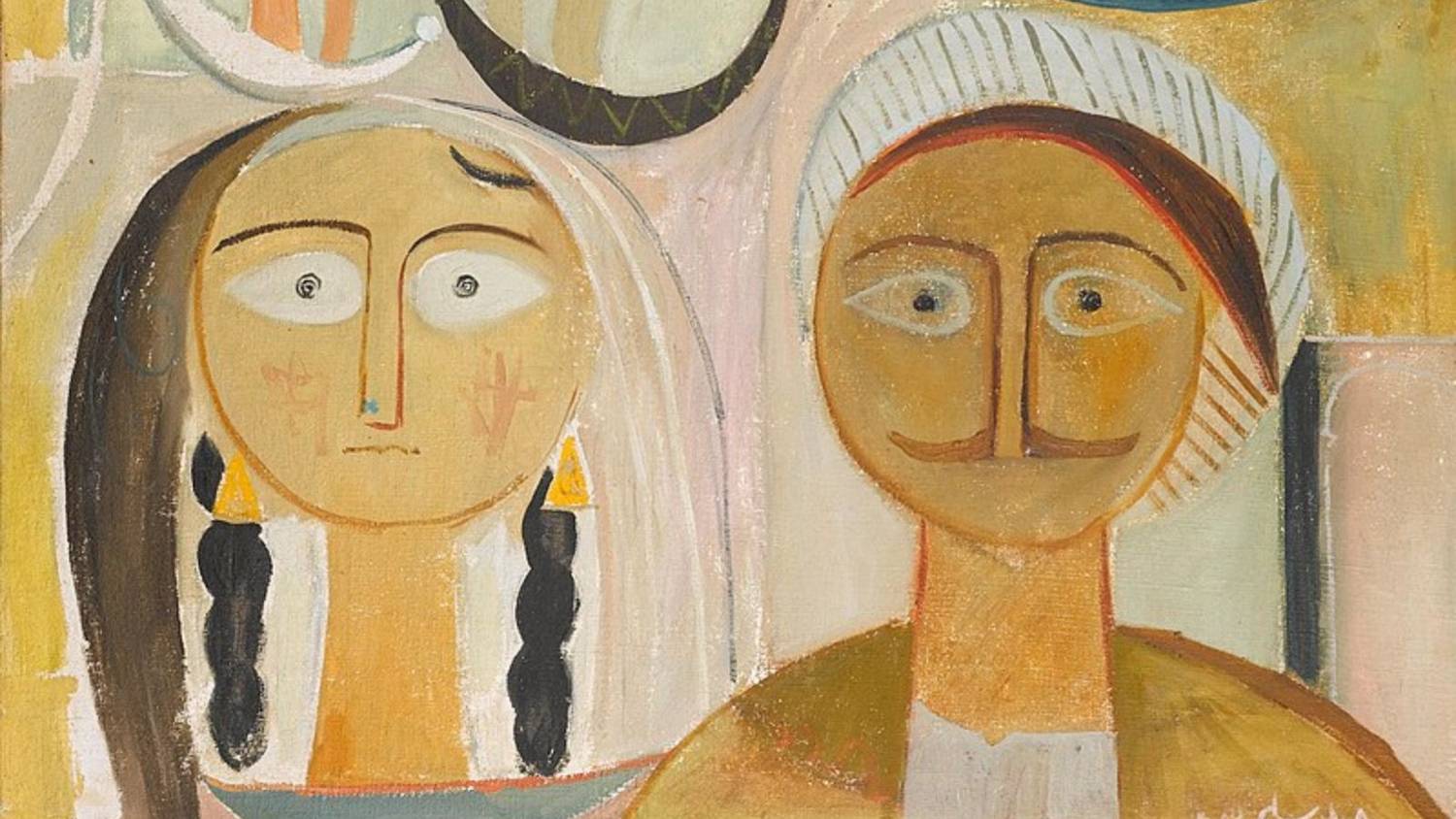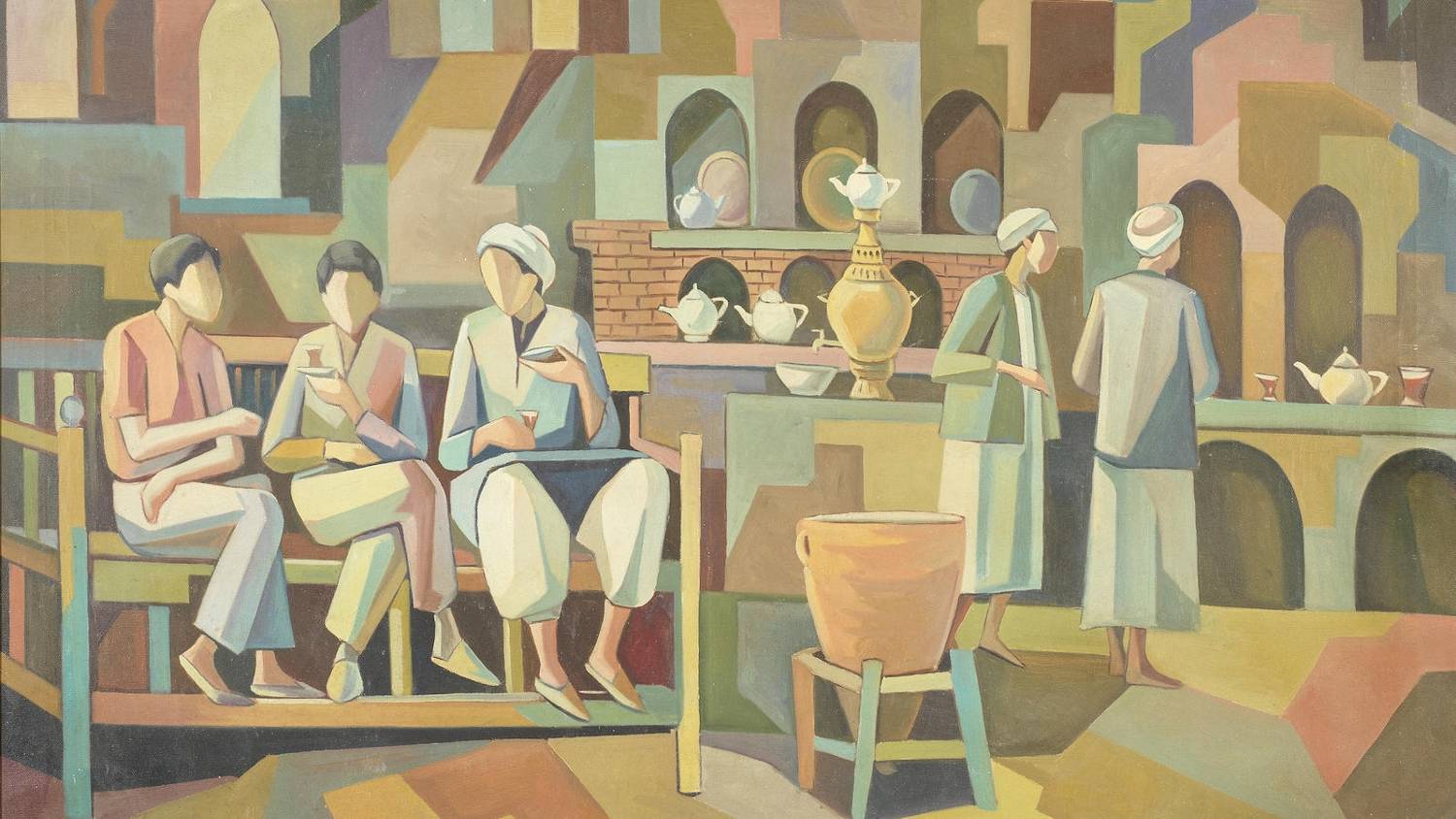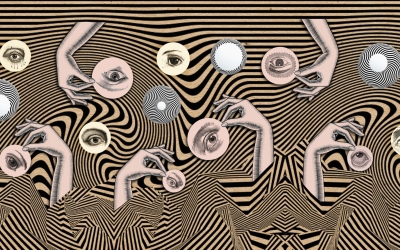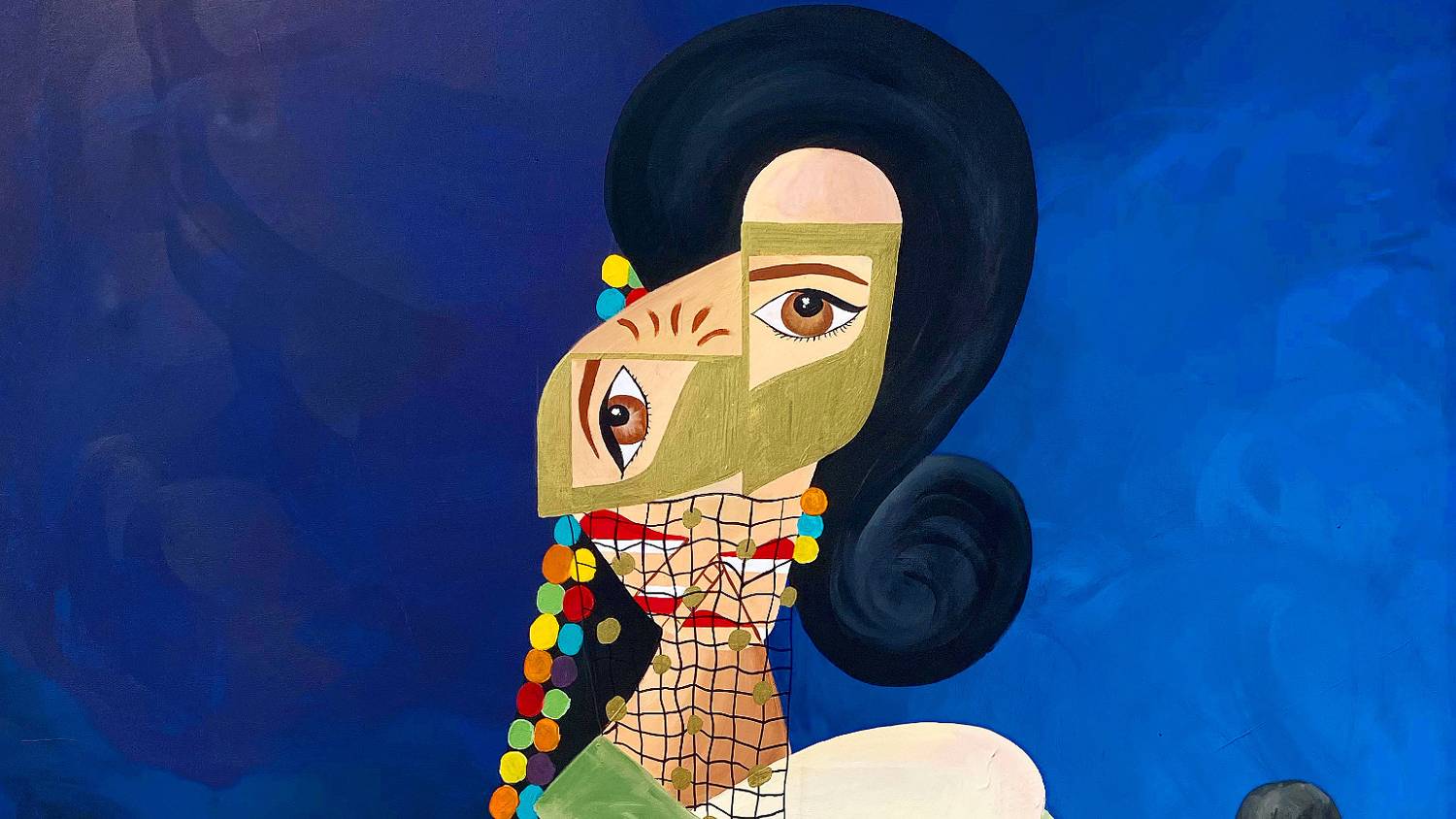Picasso and the Middle East: How Arab art embraced Cubism

While Picasso found inspiration in the primitive art of his native Spain, it was after he encountered African art in Paris that the painter completed his Demoiselles d'Avignon in 1907, a revolutionary work that redefined art and propelled Cubism.
In that composition, completed when he was just 26 years old, Picasso abandoned the bourgeois notions of beauty and structure for heavy line-drawings and geometric abstractions, representing five nude sex workers.
For Picasso, Demoiselles d'Avignon marked a departure from his earlier practice and launched a life-long quest towards reinventing himself through art.
He understood that painting wasn't just about achieving an aesthetic goal but that it was a form of "magic" between humanity and a hostile world.
But Cubism, a term coined in 1908 by a French art critic, was not always revered. Cubist paintings, such as Demoiselles d'Avignon, shocked and outraged.
Stay informed with MEE's newsletters
Sign up to get the latest alerts, insights and analysis, starting with Turkey Unpacked
The public initially disapproved of that decadent and simplistic art, which ignored traditional, classical notions of beauty, perspective and proportions.
Despite those early critics, Picasso, together with Georges Braque and other artists, quickly made a name for themselves. Their movement peaked around the start of World War I and continued strongly afterwards.
Picasso's Guernica (1937), one his most definitive works, denounced the horrors of war – the bombing of the town during the Spanish Civil War – at a time of rising fascism across Europe.
Because it uses a diffracted, symbolic composition mixing animal and human shapes in distorted expressions and placements, the artwork conveys universal pain on a scale rarely achieved.
Cubism altered conventional measures of shape and mass. It transformed paintings from a figurative exercise depicting scenes and subjects with realism, to a mosaic-like explosion of collages, opening new landscapes of early abstraction.
In that, Cubism opened a door to consider the coexistence of multiple realities at once. Later, other movements would emerge in response to Cubism, such as Surrealism.
Picasso and Arab Modernism
Picasso never travelled to the Arab world yet his distinctive style became central to emerging Arab modern art movements and manifesto.
As early as 1938, more than 30 Egypt-based artists of all faiths expressed their support for European artists facing totalitarianism in a ground-breaking manifesto called Long Live Degenerate Art!, which was printed in Arabic and French.
The manifesto included a reproduction of Guernica, as embodying resistance to oppression and an example of "free art". The signatories were comprised of artists who would join an influential Egyptian Surrealist group, Art and Liberty.
Many Art and Liberty members were inspired by Picasso's techniques to critically engage with the social inequalities of Egyptian society at the time, such as Kamel el-Telmissany (1915-1972).
In these Egyptian works, we see profound humanity, agony and a revolutionary attempt at capturing a spirit of the masses through singular portraits.
Yet the most significant Arab homage to Picasso came from Baghdad. Established by Jewad Selim (1919-1961) and Shakir Hassan Al Said (1925-2004), the Baghdad Modern Art Group called Picasso "the artist of this age" in their 1951 manifesto.
For this group, Picasso's strength married Iberian (and thus Andalusian and Islamic) art and African primitive art to post-Impressionism. In other words, Picasso blended old and new to create something surprising and innovative.
For these Arab artists, Picasso charted a path to emulate. According to Shakir Hassan Al Said, the Baghdad group sought "the beginning of a new school of painting", melding all that preceded with "the unique character of Eastern civilisation".
Arab Modernism, as the movement came to be known, would then bridge the thousands of years separating ancient Mesopotamia from Baathist pan-Arab nationalism.
The Baghdad Modern Art Group quickly tested its appetite for local character in the first modern art exhibitions they organised. Cubism became a method, a new grammar and language that its prominent members would champion.
Jewad Selim and Arab modernist pioneers
Arab modernists used Cubism to sketch new vistas and reinterpret canonical texts. For example, Jewad Selim offered a new twist on Yahya al-Wasiti's 13th-century illustrations of the medieval tales forming the Maqamat al-Hariri.
Selim, who had travelled to Paris shortly after Picasso's Guernica, encountered the medieval source material via a French picture magazine in his early 20s. It was an instant revelation.
In Selim's paintings, Young Man and his Wife (1953) and Woman Selling Materials (1953), we see the resurgence of traditional motifs, such as crescents and line work that provide fresh, vivid insights.
The emergence of this new art resulted from the rediscovery of Arab and Islamic heritage and the confrontation of new forms and techniques, which were influenced in part by Polish artists deployed to Iraq during World War II, several of whom ended up befriending Selim and his peers.
Selim was also a key figure in the regional exchanges and conversations of Arab artists. He designed the Freedom Monument which crowns Baghdad's Tahrir Square – a fresco to a modern nation – a sculpture completed by his wife, Lorna Selim, a fellow modern artist, after Selim's untimely death.
His portraits and scenography, detailed in multiple tableaux and vignettes, have contributed to shaping a new national narrative and enthused a new generation of daring artists.
A contemporary of Selim and Shakir Hassan Al Said, Hafidh al-Droubi (1914-1991) travelled and trained in Rome and London before returning to Baghdad. With them, he co-founded the Art Friends Society in Baghdad in 1941, the first official art collective in Iraq, and later the Impressionists Group in 1953.
Al-Droubi, for whom "Baghdad is my soul, my mother and my everything" painted numerous slices of daily life – scenes set in cafes (Baghdad cafe, 1969) and hammams (Cubist Bathhouse, 1960), featuring every day figures, notably market sellers and dancing women.
One can identify his affinity with Cubism via the use of geometric shapes and precise, diffracted line work, subdued desaturated hues including a persistence of blues, and the recurrence of familiar Cubist motifs such as the guitar.
Many of these artists became pioneer painters but also educators. For instance, Dia al-Azzawi (b. 1939) was a student of al-Droubi and wrote the New Vision Group's manifesto in 1968 which called for "change, progress, and creativity".
Al-Azzawi, who has often been called the "Picasso of Iraq" has influenced generations of Arab artists. His works have incorporated Arabic calligraphy, animals and symbols.
Picasso's influence is evident in al-Azzawi's Sabra and Shatila Massacre (1982-1983), a monumental work on paper expressing suffering, chaos and horror in response to crimes committed in the Palestinian refugee camps of Beirut during the Lebanese Civil War.
"Dia al-Azzawi himself said when discussing Picasso in 2020 that the way Picasso painted the war from afar whilst in Paris inspired him. This is also how he had been painting Iraq, Palestine and Lebanon's war – equally from afar, living in London," said Mysa Kafil-Hussain, an art historian, archivist and researcher who manages the archives and library in al-Azzawi's London studio.
Years later, al-Azzawi would similarly reflect on other calamities, in Mosul: Panorama of Destruction (2017-2020), a 10-metre-long tapestry which exudes an anti-war cry, included in a retrospective of his work earlier this year.
An enduring interest
Several exhibitions have shed light on Arab Art and its connections with Cubism, Surrealism and other artistic movements which have traditionally been studied in their European incarnations.
"Khaleej Modern: Pioneers and Collectives in the Arabian Peninsula" at NYUAD Art Gallery in 2022 (curated by Aisha Stoby) surveyed the incredible outputs of these artists at a time of profound changes in their respective countries.
Beyond the well-documented art hubs of Baghdad, Cairo and Alexandria, the ground-breaking show recalled how modernist influence spread across the region.
For instance, Bahraini artist Abdul Karim al-Orrayed (b. 1934), who co-founded the Bahrain Contemporary Arts Association and the Arts Amateurs Association, experimented with Cubism techniques, as did others.
Around the same time, the Institut du Monde Arabe discussed more specifically the kinship between Picasso and the Arab avant-garde between 1940-1980.
The show surveyed Lebanese, Moroccan and Sudanese artists like Ibrahim El-Salahi whose Self-Portrait of Suffering (1961) channels the uncanniness and otherworldliness of Cubism.
Cubism and Arab art are not consigned to the study of the past. Contemporary Saudi artist Faisal Al-Kheriji remembers the first Picasso painting he saw as a teenager, Three Musicians (1921), which is displayed at the Museum of Modern Art in New York City.
"I just fell in love," Al-Kheriji told Middle East Eye. The composition is simple yet it reveals a depth in the jigsaw brush strokes and collage which incorporate the figures of the harlequin and Pierrot from the popular theatre of the 16th-century Commedia Dell'Arte.
Al-Kheriji's style has evolved to embracing Cubism which he uses to explore folk aspects of Saudi culture. Men of Saudi Arabia draws from Picasso's Women of Algiers (1955) which itself had been influenced by Matisse's odalisques and 19th century Orientalists such as Delacroix.
But in Al-Kheriji's interpretation of this theme, which visually reminds one of Faiq Hassan's Bedouin Tent (1950), we find ourselves under the fabric of a tent to the sound of a string instrument and the smell of coffee. Two characters in traditional clothes stare directly at the viewer and make us question masculinity and representation.
Blending Picasso's approach to visual fracture and Arab modernists' folk portraiture, Al-Kheriji's female portraits, such as Najd's Girl (2021) or Censored, document a transforming Saudi society and engage with the boundaries of figurative work.
Al-Kheriji explained his approach to pause and interrogate our gaze: "I'm painting people in a way that is different but which makes you stare at the picture more", he says to critics who question his use of distorted images.
Cubism, a visual bridge of cultures, helped Arab modern art imagine a nation, reclaim an essence in art, and express a radical spirit that is both plural and local.
This article is available in French on Middle East Eye French edition.
Middle East Eye delivers independent and unrivalled coverage and analysis of the Middle East, North Africa and beyond. To learn more about republishing this content and the associated fees, please fill out this form. More about MEE can be found here.


